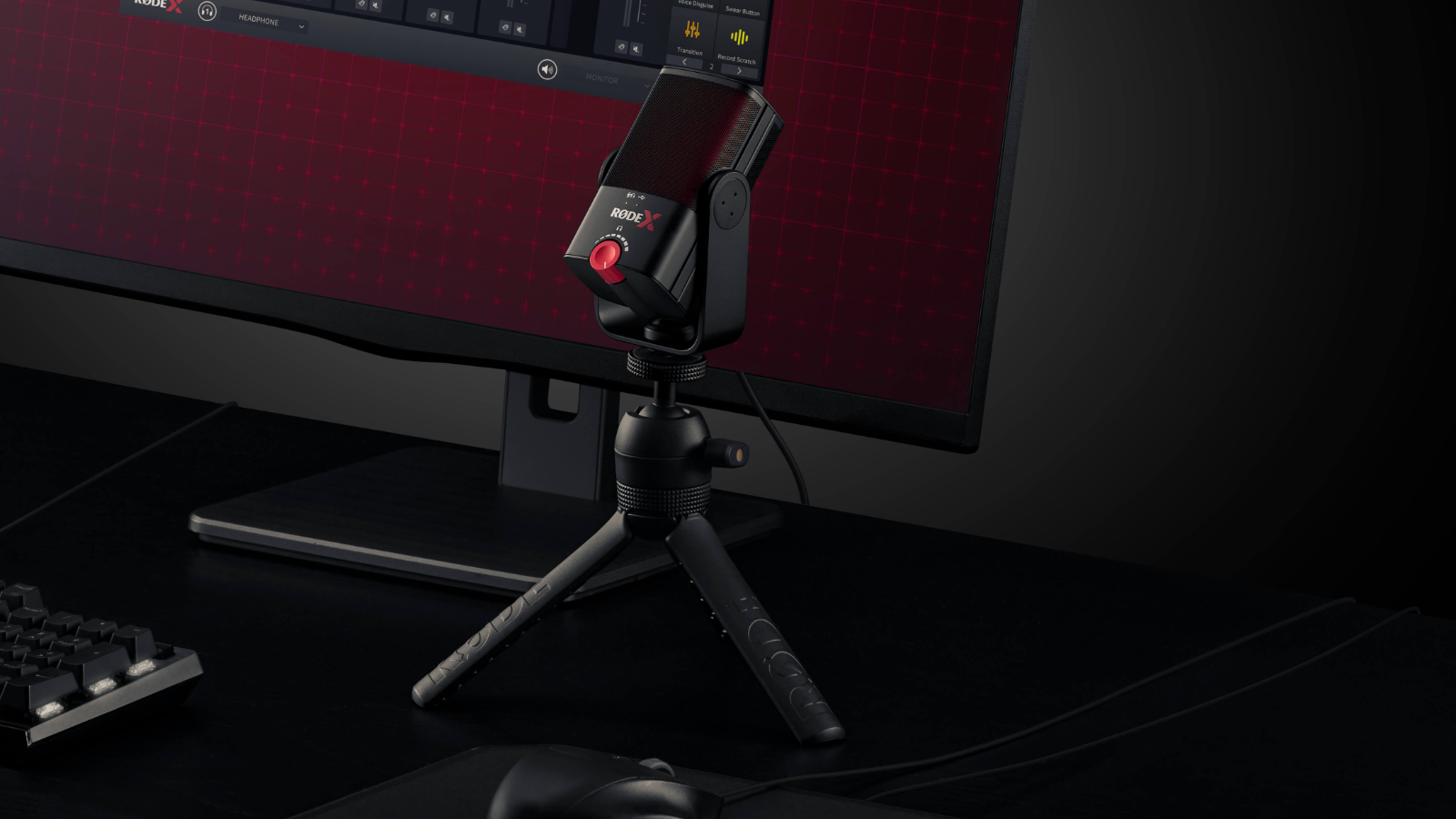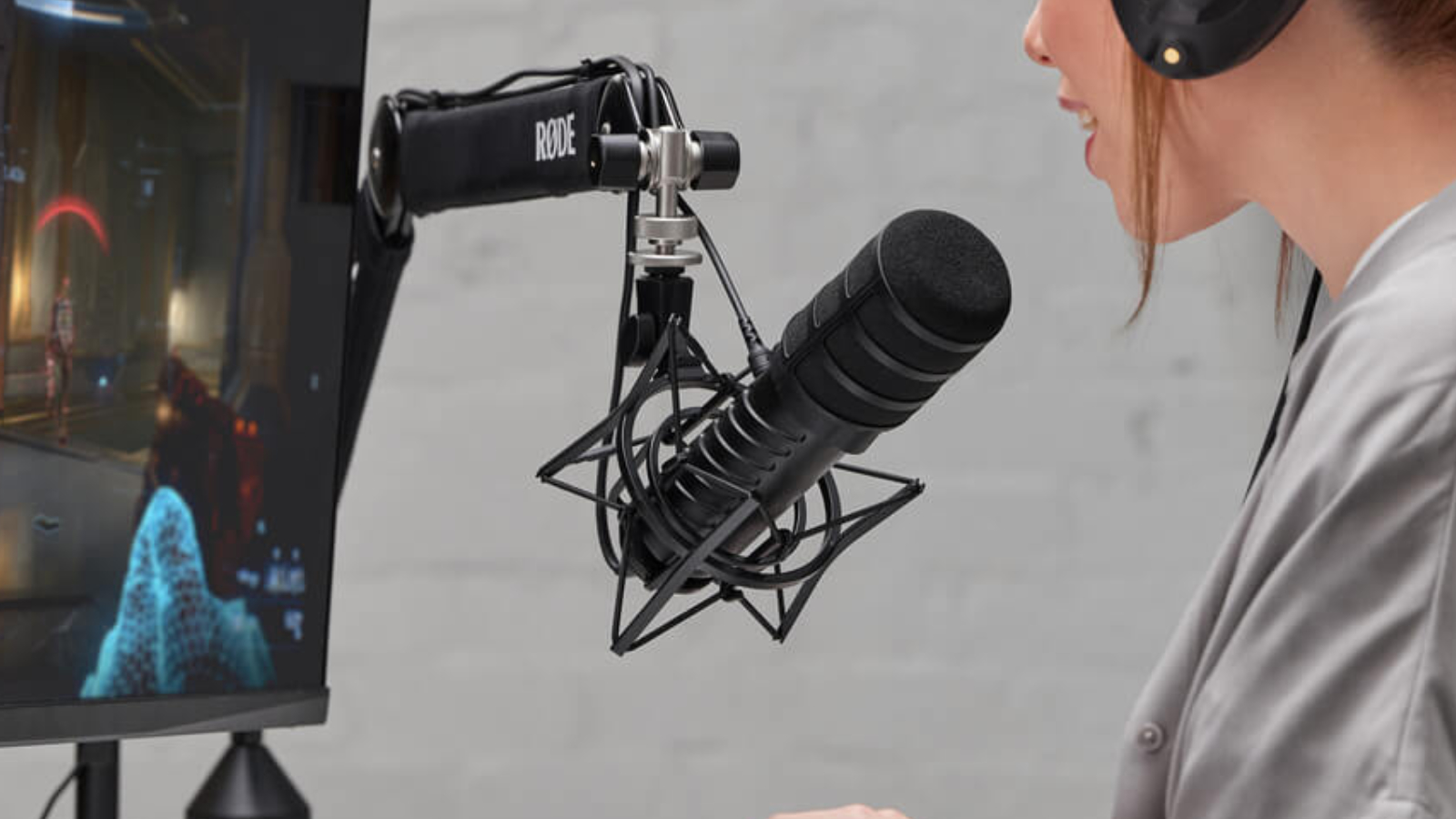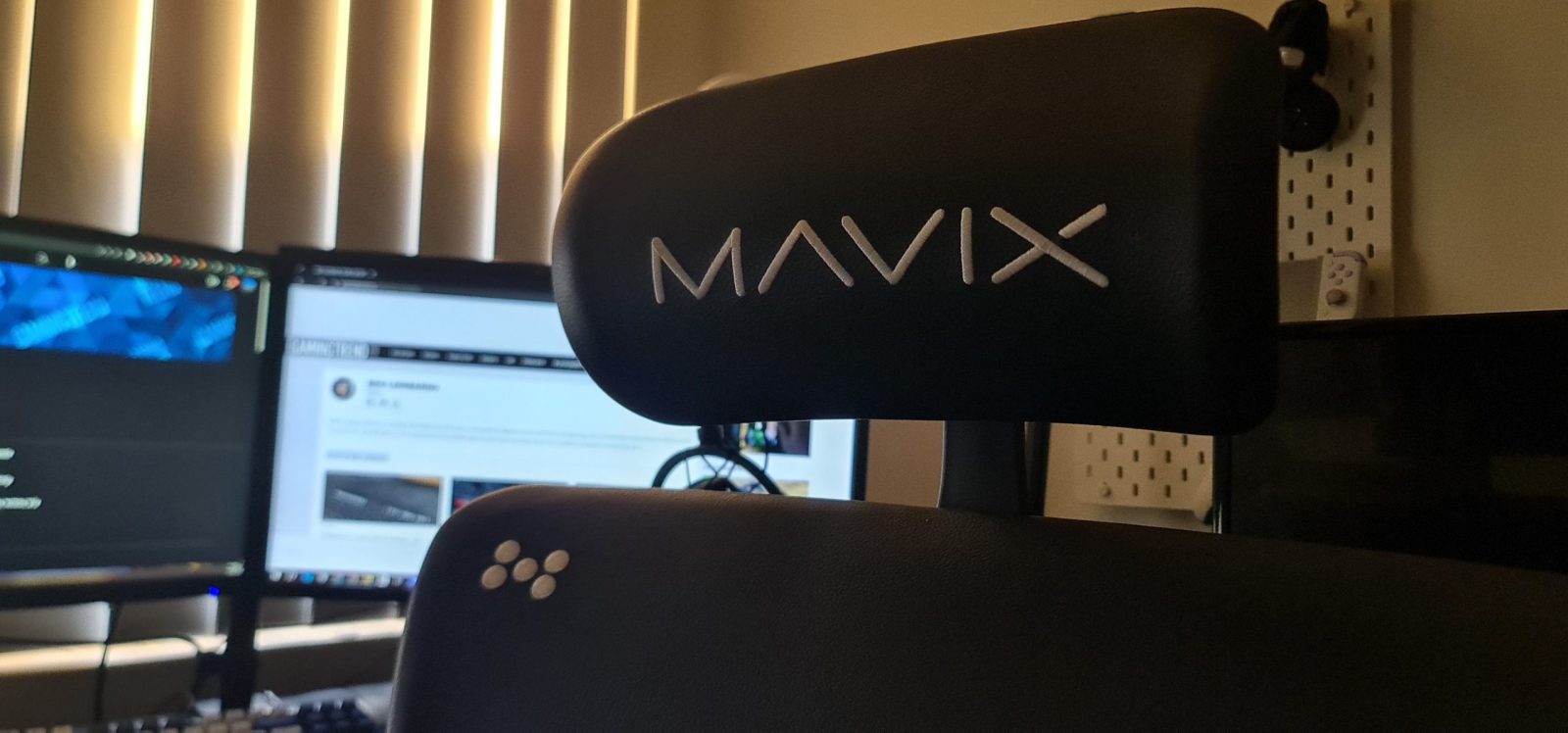R0DE is one of those names that is synonymous with the audio industry. Whether you are in the commercial space, a professional movie maker, or a plucky YouTuber just getting started, R0DE is probably on your radar. Today we are going to take a look at some of those solutions, as well as a bit behind the technology. To assist, I’ve also enlisted the help of Ara Lee, lead singer of the band Rush of Red. She’s an audiophile of the highest order, and has entirely too many microphones in her mad scientist labs – she knows sound.
In the video below, you’ll hear all of the microphones, with each one labeled for clarity. I encourage you to laugh as I talk about having a safety track, and then managed to botch my own audio capture. Chalk it up to this camera being completely new to me, but I forgot to enable my side, so all of my voice in the first ⅔ of the video is actually captured via that aforementioned safety track. I don’t want you to think that this was a problem with the gear – nope, this is all me. Let’s get started.
The first piece of gear we are going to look at is the NT-USB. Now, I can hear you say “Wait a minute, hasn’t that been out forever?”, to which I’ll reply “Yes, yes it has”, but it serves as an excellent comparator – it’s been one of the best pro-sumer microphones on the market. A condenser microphone, the NT-USB provides a very warm sound, and with a removable external pop filter, it handles vocals and music perfectly. The USB part might give you pause, but don’t listen to the critics that insist that only an XLR microphone can produce excellent sound – one listen to this microphone and it’ll change your mind.
R0DE NT-USB+ , NT-USB Mini , XCM50, and XDM100 Microphone Shootout [Gaming Trend]
How do you follow such a clean sound as the NT-USB? Where do you improve? This is something R0DE has asked themselves, and their answer is by adding a plus after the name. Kidding aside, the NT-USB+ provides the same warm and clean sound, but now with a studio-grade condenser and an integrated high-gain preamp they are aptly calling Revolution. Also integrated is a new APHEX digital signal processor (DSP) designed to directly integrate with their various software packages to ensure you have the best possible sound. While they may look similar, this newest iteration is a quantum leap over its predecessor.
One of the biggest improvements to the NT-USB+ is the move to USB-C. This simple connection change enables you to record from just about any modern device. Tablet, phone, consumer-grade cameras – just about any small portable device with that connection now has a small form factor microphone for audio. It makes your next podcasting location literally anywhere you plant your feet. We’ll get deeper into the software later, but here’s a quick rundown of the hardware.

- Acoustic Principle – Pressure gradient
- Polar Pattern – Cardioid
- Frequency Range – 20Hz – 20kHz
- Dynamic Range @10% THD – 97dB
- Input SPL @10% THD – 118.0dB (as per IEC 60268)
- Output Connection – 3.5 mm headphone connection
- USB-C connectivity
It’s impressive just how much of an improvement the NT-USB+ is over the previous model, made better by the fact that it comes in at $169 – the same price as the standard model when it launched in 2014. It’s packed to the gills with tech, so I would have expected it to retail at $199 – thankfully R0DE disagreed, and we all benefited as a result.
The last test for the NT-USB+ was easily its most difficult – Ara Lee’s pipes. She can belt it out and hits all the notes, so I thought I’d turn her loose and see if the NT-USB+ could handle it, or if’d peak out when she rattled the rafters. Ara Lee has a number of microphones that struggle with that task but surprisingly the NT-USB+ managed it without a single setting adjustment. To be clear, I’ve done no cleanup of any kind on the audio, haven’t added any compressors, and haven’t tweaked the intensity in any way – this is pure, straight from the tap. Put simply, a microphone at this price range shouldn’t be able to do this, and yet here we are. It’s impressive.
Switching gears, there are plenty of you reading this that stream games, and a solid microphone is the difference between a great session and a poor one. Weak video can be overcome, but poor audio is the fastest way to turn off your viewers. To that end, R0DE has delivered a pair of new microphones for that purpose under what they are calling R0DE-X. These microphones, the XCM-50 and the XDM-100 are purpose built for podcasting and music. There are a number of differences between these two mics, so let’s start with the XCM-50 and talk about what it has in common with the NT-USB+.
Up front it’s very clear that the XCM-50 has a great deal in common with the NT-USB+. It has the same USB-C connection, the same internal APHEX DSP processor, and the same cardioid polar pattern to capture your voice as clearly as possible. Unlike the NT-USB+, the XCM-50 moves the pop shield internally. Pop shields are meant to filter out what are called “plosive” sounds, such as the sound of the letter P which can cause a microphone to peak. Additionally, the capsule is internally shock mounted to help prevent peaking from bumping the microphone or shifting things around it. The device is mounted inside of a 360 degree u-shaped swing style mount with a standard ⅜” thread. This will allow you to connect it to just about any device you’d like to use to support it. Naturally there is a R0DE boom arm for the job, the PSA1+, but you can also use a desk weight, a stand, a tripod (like the one that’s included, of course), and just about everything in between. This is handy as your desk layout might dictate that you have the microphone mounted above your monitors, come from underneath, or just sit on your desk in the center.
However you end up using the XCM-50, it’s gonna look the part. The black square frame surrounds the red shell, giving it a distinct look. The whole thing is made of metal instead of plastic, giving it far more durability than its contemporaries. It gives it a real heft, which I appreciate. The large dial on the front is used for controlling your headphones, but it also serves as a button. Pressing it will hardware mute your microphone instantly, letting you cough or adjust something that would otherwise make a bunch of racket.
One of the best things about a well-built condenser microphone is that you don’t have to practically have your mouth on the metal to give it a clean sound. Placing it roughly half a foot from your face (and out of the way) will allow it to capture your voice naturally, but maybe you’d rather have the microphone out of frame. Well, you can hit the tight cardioid pickup button and move it a little further away. I’ve tested it at upwards of two feet away and with little reduction in quality. I did find that it picked up my more “excited” typing with that tight pickup toggled, but maybe I’m just a little bit loud? Still, not having to do some strange sideways lean to speak into the microphone is a welcome improvement – something I can’t say about my current microphone.
Let’s take a look under the hood and see what’s inside the XCM-50.

- Polar Pattern: Cardioid
- Acoustic Principle: Condenser
- Frequency Range: 20 Hz — 20 kHz
- Connectivity: USB-C
- Analog Outputs: 3.5mm Headphone Output
- Sample Rate: 48kHz
- Bit Depth: 24-bit
- Included Accessories: Tripod 2, SC29 USB-C to USB-C cable, 3m Headphone Extension Cable
It’s pretty clear that the XCM-50 is an outstanding microphone, so why would I need the XDM-100? To answer that question, we have to answer what the differences are between a condenser and a dynamic microphone.
The primary difference between a condenser microphone and a dynamic one is how it picks up sound. A condenser microphone uses a diaphragm condenser that is electrically charged. When sound hits that diaphragm, it vibrates. That vibration is measured and turned into an electrical signal, capturing a very wide range of frequencies. When you hear that a sound is “warm” or “rich”, that probably comes from sensitivity of the condenser. Cheap condensers sound tinny, good ones can make something like an acoustic guitar, a harp, or a piano come to life in a way that makes you feel like you are in the room. But what about a drum set? Well, that’s where you need a dynamic microphone.
A dynamic microphone has a lower sensitivity and a higher gain threshold, allowing it to capture louder instruments. If you want a perfectly inelegant demonstration of what a condenser microphone sounds like at a live event, listen to that recording your friend insisted on making at the last concert he attended. It’s gonna sound distorted, peaked as all get-out, and terrible. Those are microelectromechanical electret condenser microphones, and they are terrible for anything louder than a speaking voice. On the other hand, when you watch a video of your favorite band, they’ve used high end dynamic microphones for the job. That’s precisely what the XDM-100 is for. To properly test it, we took it to Ara Lee’s practice room and captured a few tracks of the tribute band The Tools doing their thing.
As you can hear in the video above, the band is crisp, the sound is whole, and the instruments are clear, and with no peaking whatsoever. I can’t say I’ve had too many microphones manage that, and none that cost less than $500! Let’s get a look under the hood to see how this is accomplished.

- Polar Pattern: Cardioid
- Capsule: Dynamic
- Frequency Range: 20 Hz — 20 kHz
- Connectivity: USB-C
- Analog Outputs: 3.5mm Headphone Output
- Sample Rate: 48kHz
- Bit Depth: 24-bit
- Included Accessories: PSM1 Shock Mount, SC29 USB-C to USB-C cable, 3m Headphone Extension Cable, Pop Shield
But wait – aren’t those the same exact specs we’ve posted twice before? It’s certainly similar, but that simple capsule change makes all the difference in the world. All that said, does it make sense to use an XDM-100 in a podcasting or streaming scenario? Well, that depends.
Since much of the same technology that resides in every microphone we’ve touched on is present in the XDM-100, you know it’s going to perform well. The switch to a dynamic capsule also means that it’s going to filter out things like clicky keyboards and mice, as well as any unwanted noise like dog barks, road noise, or anything else that might interrupt your capture. It also means that you have a microphone capable of capturing from a further distance away and still have it sound clean. Unlike its smaller brother, I can’t tell any difference between voice captured at close distance or at over two feet away.
Thus far, all of the audio we’ve showcased is recorded in a plug-and-play set-it-and-forget-it configuration. You can certainly do that, but you’d be leaving a lot of performance on the table. All of these microphones have direct hooks into the UNIFY suite of software. Not unlike Voicemeeter, a solid software package in its own right, UNIFY provides a virtual mixing board for up to four microphones and six virtual audio devices. This means you can separately capture four microphones for a podcast without the need for a hardware mixer – though as you might expect, R0DE does offer a hardware solution called the RodeCaster Pro for exactly that purpose. This is handy if your team is all on-site for an event like E3, PAX, or something similar.
The six virtual audio devices can be just about anything you’d like. Discord voice chat, game audio, a midi instrument, a background audio track, audio coming from your browser, or any other source you can think of. Being able to independently control all of these sub-mixes means you don’t have to fiddle with in-game settings. I was surprised by the flexibility of the software, especially when combined with multiple input sources. The best part, of course, is that it’s free, so you don’t have to take my word for it. It’s also platform agnostic, so there’s nothing stopping you from using it with whatever hardware and software you’d like – try it for yourself.
Honestly I knew what I was in for going into this shootout. R0DE has a well-earned reputation, and one they’ve been re-earning with each tech refresh on their various lines. I’ve been using their lavaliers and shotgun microphones for years at trade shows and for interviews. As my equipment has become more sophisticated, so has my need for better audio capture. These incremental upgrades have served me well throughout the years, but stick with me here – none have brought the sort of upgrade this newest Rode X series of microphones has. Let me explain.
Most microphone companies remind me of car manufacturers – every year there’s a new version, and every year they are exceedingly safe about it. Here we have a leap forward that is pitched as “for podcasts” and “for instruments” and that undersells their capabilities in a way that frankly defies all good sense. Put simply, I’m not sure I could make these things peak if I set off a cannon next to it, and I have never owned a microphone with that sort of engineering under the hood. It’s clear that R0DE has spent a great deal of effort ensuring that these new devices are easy to use, but also powerful enough to be professional gear. It’d have been easy to dismiss the updated USB-NT+ or this fresh line of microphones as they aren’t XLR-based, but frankly that’s just snobbery. Somehow R0DE has managed to wring the same or better out of a simple USB connection, masking these as accessible as they are powerful. How in the world they then managed to price them this aggressively is beyond me, but I’ll take it!

Ron Burke is the Editor in Chief for Gaming Trend. Currently living in Fort Worth, Texas, Ron is an old-school gamer who enjoys CRPGs, action/adventure, platformers, music games, and has recently gotten into tabletop gaming. Ron is also a fourth degree black belt, with a Master's rank in Matsumura Seito Shōrin-ryū, Moo Duk Kwan Tang Soo Do, Universal Tang Soo Do Alliance, and International Tang Soo Do Federation. He also holds ranks in several other styles in his search to be a well-rounded fighter. Ron has been married to Gaming Trend Editor, Laura Burke, for 21 years. They have three dogs - Pazuzu (Irish Terrier), Atë, and Calliope (both Australian Kelpie/Pit Bull mixes).
See below for our list of partners and affiliates:

 1 year ago
105
1 year ago
105







